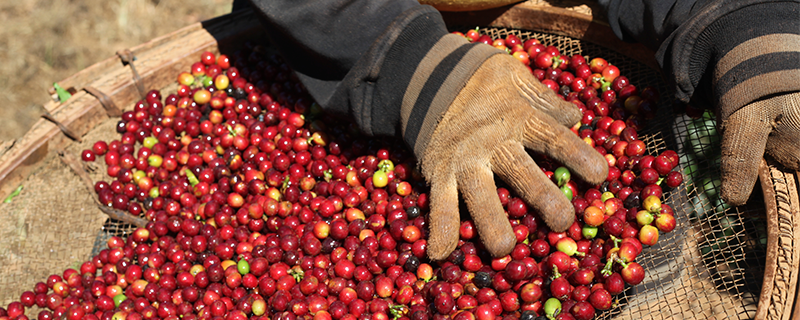The climate was not very favorable for coffee production in 2020. Besides having a long period without rain, the beginning of flowering — which normally starts in September — went through very high temperatures. Such conditions usually compromise the quality of the grains produced, leading the leaves to burn and turning them yellow. Fruits might also end up being burned, commonly known as scalding.
However, in 2021, cold fronts have been reaching Brazil since the month of June, bringing down the temperatures, especially in the southern region, causing frost to happen. For the months of July, August and September, the volume of rainfall is expected to run below the quarterly average, especially in the South. In the month of September, temperatures are expected to be slightly above average in most parts of Brazil.
The consequences of this low volume of rain in the current harvest, especially during the coffee bean nourishing period, result in a large amount of “floating fruits.” These fruits, found in coffee plantations, remain on the surface of water after immersion. They are the evidence of malformed beans.
Additionally, low rainfall associated with slightly higher temperatures, recorded at the beginning of the harvest, contributes for the coffee fruits to transition too fast from the green to the dry stage. Their cherry stage period ends up being too short, hindering the production of hulled cherry coffee. This also makes it hard for coffee producers to keep them in cold storage, potentially causing a future reduction of coffee bean supply in the market.

On the other hand, the current period with below-average rainfall favors the drying process, especially for those who dry their coffee in terraces. This reinforces that the climate can affect coffee production positively or negatively. In some cases, producers anticipate their harvest and carry out immediate soil collection and analysis to plan future fertilization, aiming to alleviate the damage caused by the climate.
It is also important to pay attention to the “biennial effect,” a typical behavior of cultivars. In a nutshell, one year the coffee plants produce massively — a process that requires too much from them. As a result, the same crop ends up producing less in the subsequent year. In 2021 we have lower yields and, just like the climate, that is a factor that cannot be avoided. However, there are possibilities to control the damage.
Some coffee growers carry out the skeletonizing process; a type of pruning that leaves the crop unproductive for a year, more precisely what would be its low-productivity year. With skeletonization it is possible to “reset” the crop in the year in which there will be poor productivity and revitalize the coffee trees in that plot by cutting the side branches, leaving a central skeleton, and the production branches. This way, it is possible to double productivity in the following year and compensate for the infertile period.
The Arabica coffee is the cultivar to suffer most from the effects of low-production biennials. In regards to regional production, the estimated production in Espírito Santo in 2021 is 13.63 million bags, 4 million bags in São Paulo and Bahia and 235,000 bags in Rio de Janeiro. This means a significant reduction compared to the amount produced in these regions in 2020.
Cooxupé is the largest cooperative of coffee growers in Brazil and the largest exporter of coffee beans in the world. It estimates a drop of 32% in the coffee harvest in 2021 compared to the 2020 season. Known for being Brazil’s largest coffee producing state, Minas Gerais has seen 60% of its municipalities’ coffee plantations be affected. That means a significant loss in production, considering a survey carried out by Emater-MG and by FAEMG.
This perspective is directly influenced by the physiological effects observed in different producing regions during this cycle, as well as the adverse weather conditions registered in many of these locations. This results in both a reduction in the average yield and a reduction of producing areas. Usually, this reduction already takes place in negative biennial cycles due to the need for more intense treatments in crops to recover the plants’ vegetative potential.



